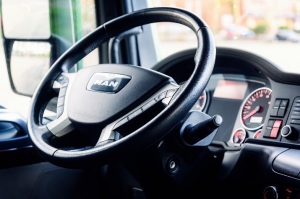 Trucking companies have several expenses they need to account for, many of which change on a regular basis. While some expenses remain relatively stable such as planned preventative maintenance, others can shift daily such as the cost for fuel.
Trucking companies have several expenses they need to account for, many of which change on a regular basis. While some expenses remain relatively stable such as planned preventative maintenance, others can shift daily such as the cost for fuel.
Less than a decade ago, trucking companies had a decent idea of what to expect financially following a claim. Replacing a bumper, labor costs per hour, and so on all had a relatively fixed expense across the industry. In recent years, however, trucking companies are taking note of more expensive and time-consuming claims. Several key culprits are contributing to this issue:
- More sensors to improve safety. There are more than double the number of sensors on today’s trucks than there were in the last decade. Every added safety feature comes with a new set of sensors. Many manufacturers hide or embed the sensors in places that are prone to damage in an accident such as bumpers, grills, mirrors, and lights. While they dramatically improve driver safety, it costs much more to repair or replace those parts with the technology upgrade.
- More costly windshields. Today’s windshields aren’t any fancier than the glass used in previous years. However, more advanced in-cab technology makes replacing a windshield a more expensive affair. Cameras require calibration to ensure the best quality picture when a trucking company replaces the window. Often times, these calibrations have to occur while the truck is in motion, which means a longer repair time and steeper labor costs.
- Murkier subrogation. Subrogation can be a nightmare process for many trucking companies. On average, it takes around 100 days to cycle through, which can lead many fleets to accept lowball offers in lieu of reducing the amount of time it takes to receive a payout. Many initial offers fail to estimate labor time accurately, which can result in a non-agreement and start subrogation over again. Other times, they base their offer on the lowest cost parts available even if those parts are across the country.
Managing expenses is just one part of a fleet manager’s job, but some of those expenses lack the transparency they once did. Avoiding collisions in the first place is a great way to avoid the hidden and growing expenses associated with claims. To learn more ways to improve your fleet’s safety and reduce collisions, contact the experts at DriverCheck.